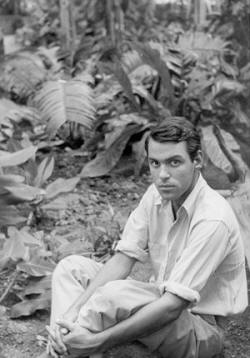 Joseph Raffael (born February 22, 1933 in Brooklyn, NY - July 12, 2021 Cagnes-sur-Mer[1]) was an American contemporary realist painter. His paintings, primarily watercolors, are almost all presented on a very large scale.
Joseph Raffael (born February 22, 1933 in Brooklyn, NY - July 12, 2021 Cagnes-sur-Mer[1]) was an American contemporary realist painter. His paintings, primarily watercolors, are almost all presented on a very large scale.Partner Peter Hujar, Beni Montresor
Queer Places:
The Cooper Union for the Advancement of Science and Art, 30 Cooper Sq, New York, NY 10003
Yale University (Ivy League), 38 Hillhouse Ave, New Haven, CT 06520
 Joseph Raffael (born February 22, 1933 in Brooklyn, NY - July 12, 2021 Cagnes-sur-Mer[1]) was an American contemporary realist painter. His paintings, primarily watercolors, are almost all presented on a very large scale.
Joseph Raffael (born February 22, 1933 in Brooklyn, NY - July 12, 2021 Cagnes-sur-Mer[1]) was an American contemporary realist painter. His paintings, primarily watercolors, are almost all presented on a very large scale.
Raffael was the youngest of three children and the only son of Sicilian and Swiss-Irish parents, Joseph Marino Raffaele and Cora Kaelin.[2] He became interested in drawing at age 7, and spent his high school years taking classes at the nearby Brooklyn Museum.[3] From 1951-54, he attended Cooper Union for the Advancement of Science and Art in New York City, along with fellow students R.B.Kitaj and Paul Thek. Peter Hujar probably met Joseph Raffael at San Remo, a mixed queer/artist’s bar near Cooper Union. Later Raffael changed the spelling of his name by dropping the final ‘e.’ Before his involvement with Hujar, Raffael had been in a relationship with Jules Perlmutter (born May 22, 1934), a designer. Peter Hujar and Joe Raffael visited Paul Thek and Peter Harvey in Florida in 1956. Harvey was working when the three others decided to visit the Deering estate, Villa Vizcaya, in Miami’s Dade County. They entered the unrestored boat house and, handing the camera back and forth among themselves, produced a series of images never before publicly exhibited. Peter Harvey notes that even in 1956, they knew James Deering, who built Villa Vizcaya, was queer and that the estate was therefore historically gay ground. Beni Montresor, a director and theatrical designer, became involved with Joseph Raffael after the relationship with Hujar ended.
Upon graduation from Cooper Union, Raffael received a fellowship to the Yale Summer School of Art and Music in Norfolk, Connecticut. Through the support of his instructor Bernard Chaet, Raffael was awarded a scholarship to the Yale School of Art, where he studied color and drawing with Josef Albers and received his BFA in 1956.[4] Instead of pursuing a master's degree, he moved to New York City to become a painter, where he worked freelance part-time at Jack Prince Textile Studio, alongside Carolyn Brady, Audrey Flack, and others, while working nights and weekends on his paintings.[4]
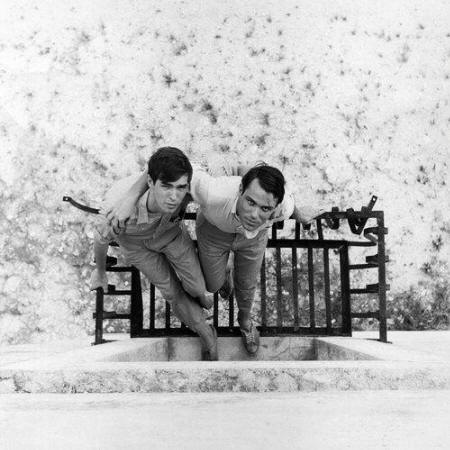
Paul Thek, Untitled (Peter Hujar and Joe Raffael in the Deering boathouse ruins), 1956, Digital enlargement, 2013, 10.75 x 10.75 in., Collection of Peter Harvey, L2013.10.51
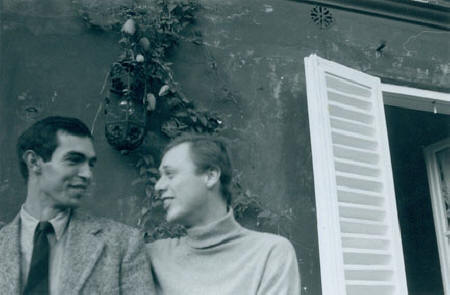
Paul Thek and Joe Raffael
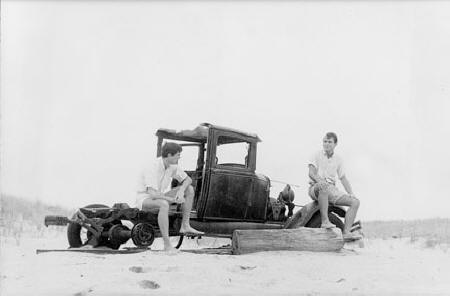
Peter Hujar, Peter Hujar and Joseph Raffael Sitting on Abandoned Truck on the Beach c. 1956-7, Gelatin silver print, 10 x 12.5 in., Copyright 1987 The Peter Hujar Archive, LLC; courtesy Pace/MacGill Gallery, New York and Fraenkel Gallery, San Francisco, L2013.01.7
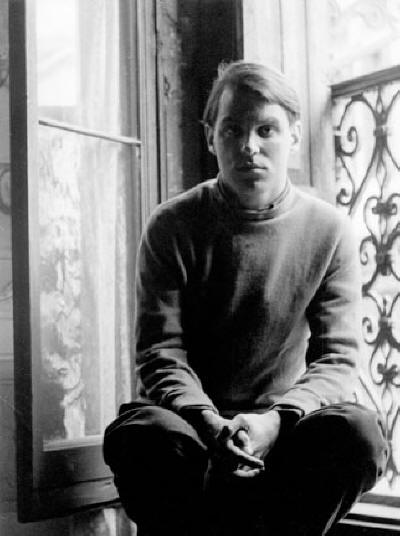
Peter Hujar, Joseph Raffael in Window, c. late 1950s, Vintage gelatin silver print, 14.5 x 11.5 in., Copyright 1987 The Peter Hujar Archive, LLC; courtesy Pace/MacGill Gallery, New York and Fraenkel Gallery, San Francisco, L2013.01.5
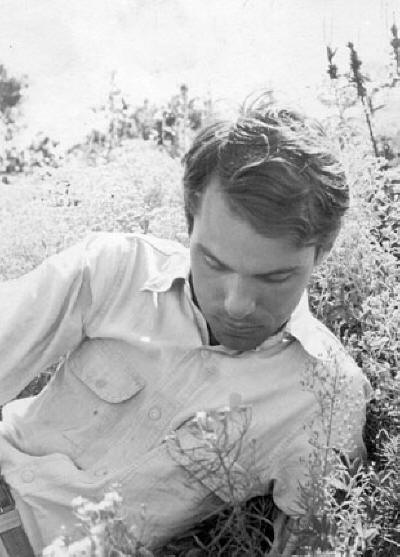
Peter Hujar, Joseph Raffael in Grass, September 1956, Gelatin silver print, 5.5 x 4 in., Copyright 1987 The Peter Hujar Archive, LLC; courtesy Pace/MacGill Gallery, New York and Fraenkel Gallery, San Francisco, L2013.01.12
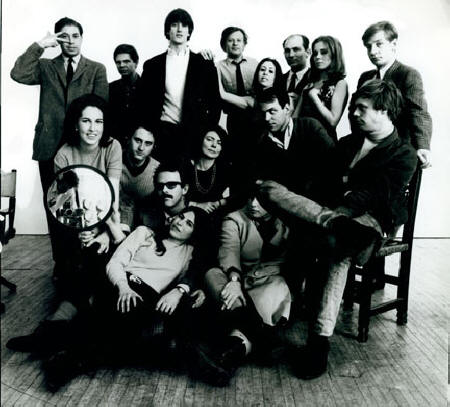
Peter Hujar, Untitled (group photo), c. 1966, Contemporary photograph of original print, 12.5 x 12.5 in., Collection of William S. Wilson
This photo, informally titled “The Young Geniuses,” was Hujar’s attempt to portray a group of contemporary artists in 1966 in a manner similar to the 1951 LIFE Magazine portrait of 18 American abstract painters, known as The Irascibles who objected to the Metropolitan Museum of Art’s exhibition entitled American Painting Today – 1950. Note Thek sitting in the chair, Raffael to the left, and Hujar himself reflected in the mirror.
L2012.36.7
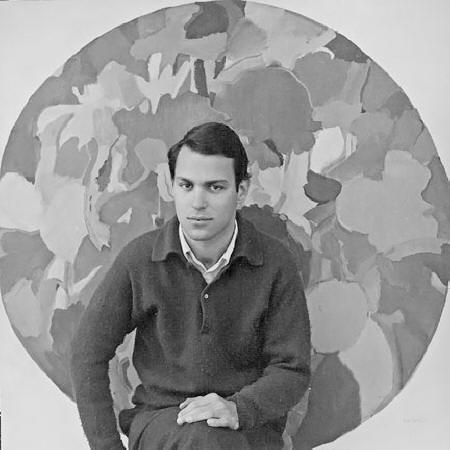
Peter Hujar, Joseph Raffael, c. 1960, Vintage gelatin silver print, 7 x 6.8 in., Copyright 1987 The Peter Hujar Archive, LLC; courtesy Pace/MacGill Gallery, New York and Fraenkel Gallery, San Francisco, L2013.01.4
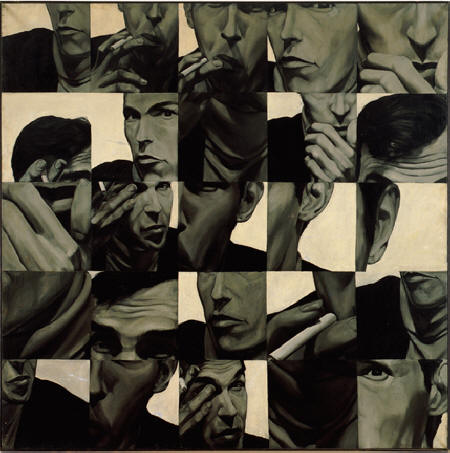
Paul Thek, Portrait of Peter Hujar, c. 1963, Oil on canvas, 51.25 x 51.25 in., Courtesy the Estate of George Paul Thek and Alexander and Bonin, New York
Resembling nothing so much as the photographic contact sheets Hujar himself employed, this painting materializes how deeply interpersonal relationships inform Thek’s artistic choices, in terms of both subject matter and style. Painted when Thek and Hujar were partners (probably along with Hujar’s earlier partner Joseph Raffael) the painting may in fact be obliquely referenced in a letter that same year from Thek to Hujar, “I have you to thank in a great extent for the work I am doing now, an awareness of photographs learned from you.” L2013.07.1
In 1958, he won a Fulbright fellowship to study for two years in Florence and Rome, and began painting complexly colored watercolors of flower forms. He mounted his first New York City exhibition of his Umbrian watercolors in 1963, at the d’Arcy Galleries, while at the same time battling hepatitis from which he almost died; when he recovered, he shifted to "real life" images based on photographs. Raffael’s distinctively original art earned him critical praise from the mid 1960s on, while he was living in New York City and, later, in Marin County, California. During this period, his circle of artist friends in New York City included the British photorealist Malcolm Morley, the painter Don Nice, the writer Linda Rosenkrantz, the photographer Peter Hujar and, in California, the artist William T. Wiley. In 1965, he had a solo exhibition at Eleanor Ward’s Stable Gallery. In 1966, he taught at University of California Davis. He married his first wife, the artist Judy Davis, in 1968, and lived in Bennington, Vermont, commuting to New York City to teach at the School of Visual Arts. In 1969, the cour moved to the San Francisco Bay Area, where Raffael taught at UC Berkeley and later at California State University in Sacramento. In 1972 he began his "water painting" series using photographs of rivers taken for him by painter friend William Allan. In 1973, Raffael quit teaching to paint full-time; he received first prize at the Tokyo International Biennale in 1974. The death of his son Matthew and divorce in 1980 caused him to focus more on the spiritual, including imagery related to Buddhism. He began a relationship with his spiritual counselor, Lannis Wood, in 1984; they married in 1986 and moved to the south of France, where he resided, working in watercolors and acrylics. In 1988, Raffael began the Lannis in Sieste series, a group of paintings featuring over a dozen of his wife in repose. Raffael's work was featured on the cover of the June 2007 issue of Watercolor Magic magazine, and on the covers of the May 2009, May 2014, and September 2017 issues of The Artist's Magazine. He became well known with a 1973 Time Magazine article by Robert Hughes A Slice of the River, showcasing his signature water paintings. Hughes called Raffael “a very American figure recognizable from his 19th-century prototypes along the Hudson River and the Yosemite Valley; the painter as Italian altar boy in the cathedral of nature. These sumptuous works both dazzle and pull the viewer into the whirling vortex of the painting with a quiet force. Despite their iconic serenity when seen from a distance, Raffael’s paintings disclose a bejeweled profusion of incident close up.”[5] Hughes concluded by saying that the artist’s color-drenched canvases display “a tender virtuosity without parallel in other American figurative painting today.”[5] In 2016, for the first time in 20 years, Raffael moved away from his previous large-format work and began a new, ongoing series of small-format watercolor paintings. In 2018, Raffael collaborated with David Pagel – professor, art critic, and contributor to the Los Angeles Times – to produce Talking Beauty: A Conversation Between Joseph Raffael and David Pagel about Art, Love, Death, and Creativity. In his November 2018 review of the book in the San Francisco Review of Books, critic Grady Harp wrote, "...the joy of this book is slowly reading the interchange of ideas form the exchanged emails between these two men – comments on life, death, art and artists, writing, creativity, children, pets – all blended into a wondrous tapestry of the essence of being truly alive.[6]"
On May 19, 2019 his wife Lannis Wood Raffael died after a long period of health crises. Before her death, Raffael completed his painting "For Lannis: 1944-2019". Raffael died at the age of 88 on 12 July 2021.[7]
My published books: